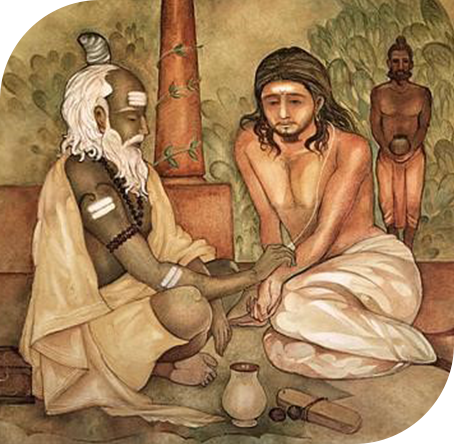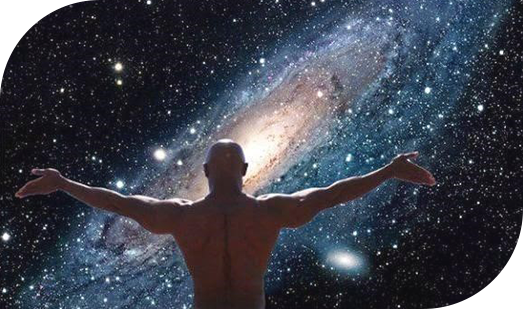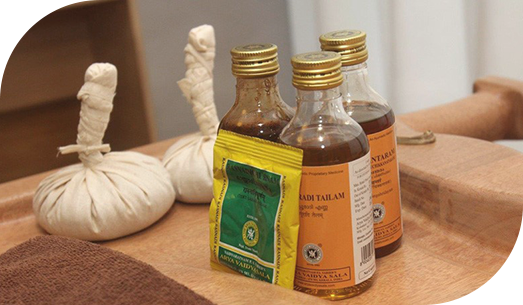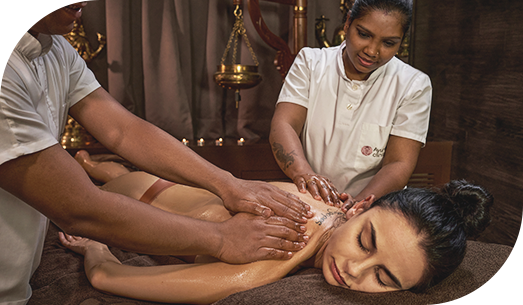Ayurveda – the ancient Indian science of health and longevity
Originating in India, it influenced the healing practices of the entire ancient world. Much of its methods were adopted in China, Tibet, Persia, Egypt, Ancient Greece and Rome.
Long before the new era, Ayurveda accumulated vast medical knowledge, including about complex procedures such as eye surgery and organ transplants.

What are the directions in Ayurvedic medicine?
1. Kaya Chikitsa
2. Bala Chikitsa
3. Graa Chikitsa
4. Shaliya Chikitsa
5. Urdvanga Chikitsa
6. Damshtra Chikitsa
7. Vrishiya Chikitsa
8. Jara Chikitsa
What should we know about Ayurveda?
As a “science of life”, it gives prescriptions for a way of life and thinking, attitude to the world, to oneself and to others.
Ayurveda believes that the restoration of harmony between man and his own nature is precisely the method of curing all diseases.
For Ayurveda, the patient has an essential role in treatment.
They must know the basics of Ayurvedic philosophy in order to become “part of the doctor’s team” and contribute to their own recovery.

Ayurvedic teachings on the Five Elements and the Three Doshas
The five elements
is a location for the forms of matter.
is associated with the movement of material bodies.
is the transformation of forms from one to another.
characterizes connectedness and penetration into nature.
determines the density and formation of forms.
The three Doshas
is a combination of space and air.
• It is a light, dynamic and cold energy.
• Responsible for motor activity.
• It includes all human movements – from blinking, through blood circulation, to locomotion.
is a combination of fire and water.
• It is passive and warm energy.
• It is associated with transformations in tissues and organs.
• It involves metabolism.
is a combination of water and earth.
• All passive, cold and damp energy.
• Responsible for the formation of tissues, organs and the body.
• This is actually the growth of the body and its defenses – immunity.
The ratio of the three types of energy is individual for each person. It is set at birth and is a unique “code” for life.
This combination determines the body type of each person – from the color of the skin, eyes and hair, to the processes in the body.
Thus the Ayurvedic teachings of the Five Elements and the three Doshas determine health, disease and cure.
Why do we get sick?

Imbalance in the ratio of Doshas mostly occurs due to improper diet and harmful habits.
In addition, people often do not take into account the activity cycles of the body and do not properly combine work, rest and motor activities.
Spiritual health activities are also neglected, leading to physiological problems.
What is the diagnostic process in Ayurveda?
It combines different methods, namely:
The remedies of Ayurveda
In the old texts there are over 50,000 herbs and formulas for their combination according to the disease, its degree of development and the peculiarities of the patient’s body type.
Purified metals can be used in some ointments and powders, but they are in strictly defined doses and ratios with the other ingredients, and their role is to enhance their action.

Ayurvedic therapies
Therefore, it is especially important to cleanse the body and restore the original state of health.
For this purpose, Ayurveda mainly uses Purvakarma and Panchakarma methods.

Purvakarma therapies
One is Snehana – oiling of the body and the other is Svedana – sweating.
• Anointing with herbal oils can be external – Baja, and can also be applied internally – Abyanta.
• In addition to drinking, internal anointing with herbal oil or ghee can be done by gargling, as well as placing in the ears or nose.
These are preparatory therapies by which toxins move from the periphery to the digestive system to be eliminated.
Panchakarma therapies
The method includes five types of therapy:
• Medicinal emesis is induced through Vamana. It balances Kapha and rids the upper body of toxins.
• Virechana is a laxative procedure that balances Pitta and removes toxins from the digestive system.
• Vasti is a healing enema. It balances Vata, and the removal of collected toxins improves the activity of the colon.
• In Nasya, medicinal oil is placed in the nose to remove toxins from the head area.
• Raktamokshan is the release of blood, while the methods can be different.
All therapies are prescribed individually, according to the type of imbalance in the body.
Disease-free life – completely possible with Ayurveda
Whether your goal is to cure a disease or prevent it, it is completely achievable with the natural methods of Ayurvedic medicine.

